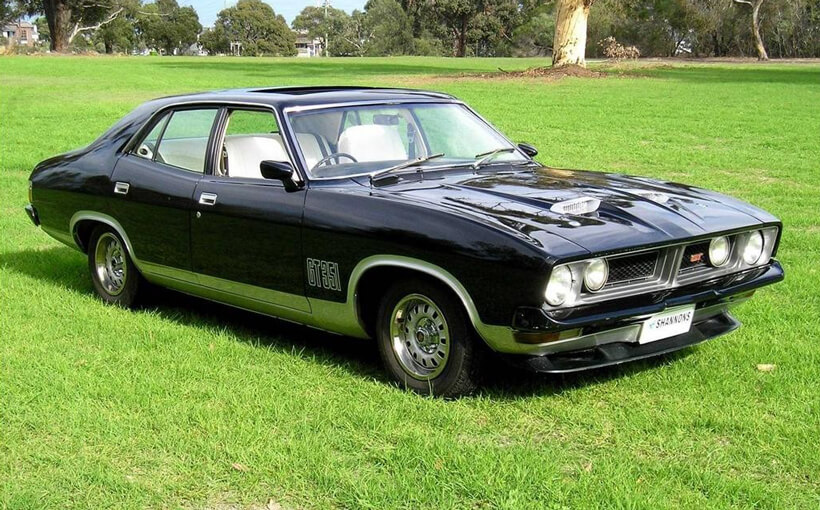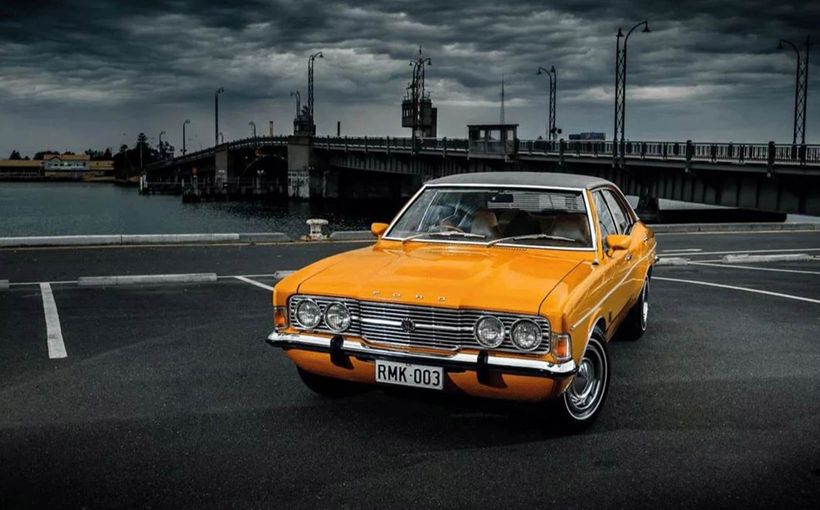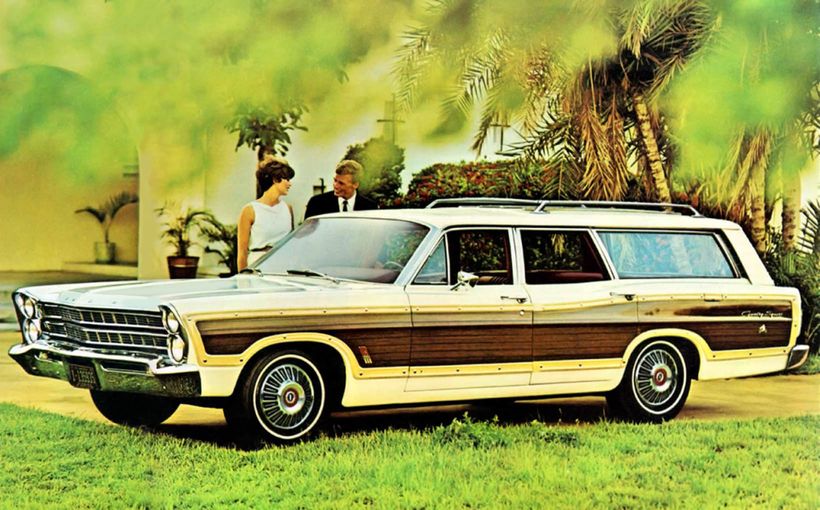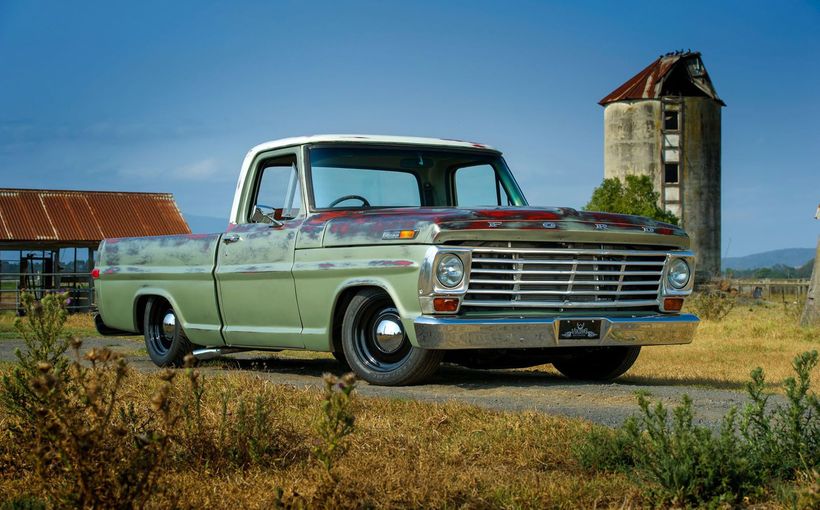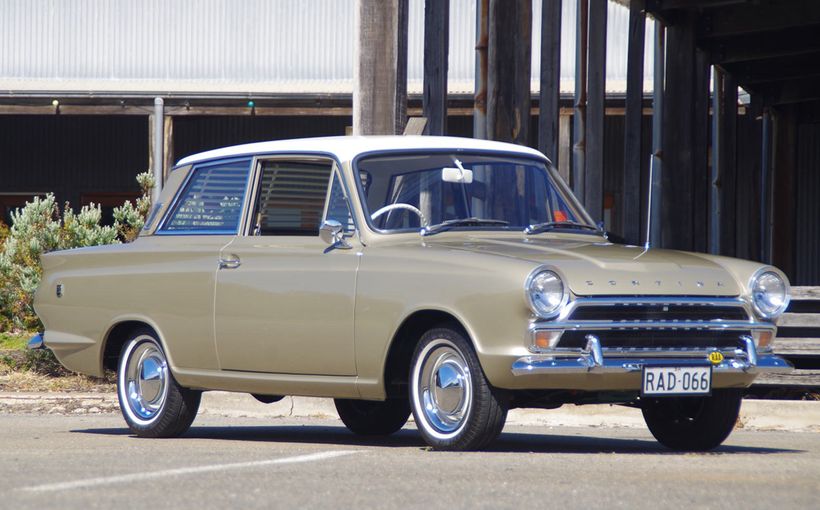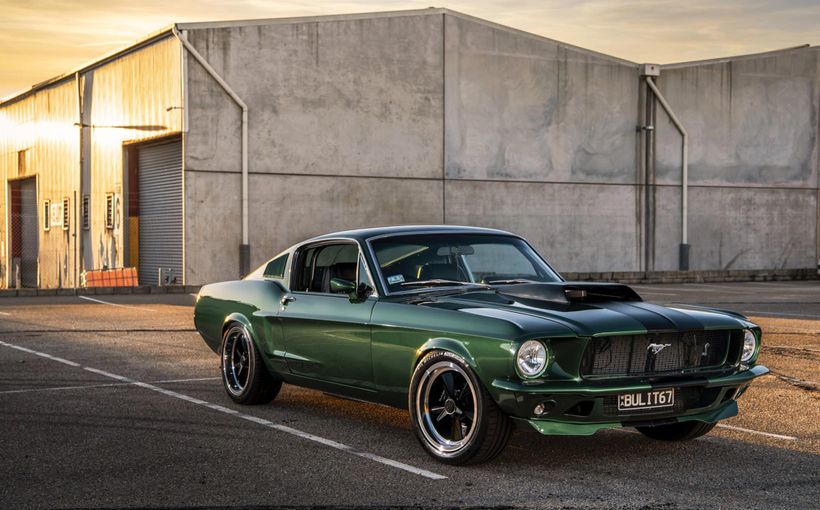Ford XB Falcon: Extra Benefits over the excellent XA

Ford Australia was building a strong marketing advantage over its rivals in the early 1970s. The XB successor, proclaimed as ‘The Great Australian Road Car’ was released a mere 20 months after the XA.
Key among these were standard ventilated front disc brakes (unassisted on Falcon and Falcon 500, assisted on all dearer XBs), four-wheel disc brakes on GTs, a new steering column and mounted on it – a first for homegrown cars – a headlight flasher: some bright spark in either marketing or engineering must have pointed out that no self-respecting great European road car lacked flashers.


Ford Australia’s marketing surge which lasted from 1965 until into the early 1980s really began when that brilliant American Bill Bourke was appointed sales and marketing manager as well as deputy managing director to Wallace Booth. The American had established a reputation as a man who could come up with brilliant schemes. He arrived in Australia in February 1965 and came up with the 70,000-mile Durability Run on the new You Yangs Proving Ground as the perfect way to launch the XP Falcon.
His audacious plan for nine days over April-May 1965 would fall at the first Workplace Health and Safety form today: take five standard Falcons of various configurations, install race drivers, then pound them flat out night and day around the new track until they had accumulated 70,000 miles at an average of 70 miles per hour. Never mind that no-one had established that such a high average was even possible on this twisty piece of bitumen with its ascents and adjacent shrubbery.
Bourke’s job was on the line: if the exercise failed, so had he, and so had the Falcon’s future in the Holden-biased Australian market. Four of the five cars rolled, but nevertheless they averaged 71.3 with the quickest a 170 manual which achieved better than 73. ‘We were able to go along to the fleets,’ said Max Gransden (Vice-President, Sales and Marketing for much of the 1970s and 1980s). There has never been a greater marketing exercise in Australian automotive history and the risk of failure had been huge.
So it was Bill Bourke who set the example. Later, Jac Nasser and Geoff Polites also brought fresh marketing verve to Ford Australia. In 1968 Bourke became managing director, having already successfully launched the Falcon GT and Fairlane. Ford Australia’s marketing momentum continued with the ‘Going Ford is the Going Thing’ and the indelible ‘Great Australian Road Car’ campaign. The XB Falcon facelift has Bourke’s name all over it.

Brochure images such as this one emphasised the Great Australian Road Car theme, one of Ford Australia’s best ever campaigns.
This is arguably the most effective facelift ever given to an Australian car. So often the original shape is best and the so-called ‘facelift’ undermines the purity of the fresh shape. Three Ford Oz design amigos had flown to Dearborn to design the all-new third generation XA Falcon under head office supervision. They were Jack Telnack, Brian Rossi and Allan Jackson. Years later, Telnack opined that the XB was the best executed of the three models – XA, XB and XC.
It would transpire that GM-H was following a similar design philosophy with its HJ facelift of the HQ, albeit far less successfully. Head Holden stylist of the time Leo Pruneau explained to me in the mid-1980s that research around the time the XB was in planning showed that Australian customers preferred harder-edged, more aggressive lines, epitomised by the EH Holden and XY Falcon. With its neater frontal treatment, new bonnet and new wraparound taillights, the XB looked more macho than its predecessor. A year later, the HJ Holden also looked more aggressive but had lost all the HQ’s feminine beauty: so while Ford took half a step forward in styling terms, GM-H took a full step back.

The GS option allowed buyers of a Falcon 500 or Fairmont to get a GT-lookalike at a much lower price.
Nowadays, I find it impossible to imagine the XB GT without picturing the GT Hardtops circulating at Mount Panorama. Racing absolutely improved the Ford Falcon breed. At the XB launch or soon afterwards, managing director Brian Inglis openly admitted that a four-wheel disc braking system would never have been developed for the Falcon if it hadn’t been for Bathurst. The luxury LTD and Landau siblings were first with this desirable feature several months earlier during the production run of the XA. They remained current models. Holden never challenged the Landau while its Caprice response to the long-long wheelbase LTD lacked (a) the necessary inches and (b) the necessary cubic inches.


On engines, the Falcon range had its rival beaten wherever you measured.
Wheels published a road test by editor Peter Robinson of two XB GTs in its January issue (in which the Leyland P76 was named Car of the Year) under the heading ‘More than Ever a Grand Tourer’. The opening paragraph conveys the mood of the day:
Even on the very last mile of a 1200 mile test of the new Falcon XB GT we took great delight in flashing the headlights with the car’s new steering column stalk.
Wheels compared an automatic Hardtop and a manual sedan, mostly to the detriment of the coupe:
Inherently, the four-door is a tighter car and it feels that way. There were more rattles and sizzles from the dashboard of the Hardtop, the doors didn’t close with the same solid thunk and the car generally wasn’t as solid in the body.
But the biggest drawback to the Hardtop is its lack of visibility. The windscreen is two inches shallower than the sedan and to provide at least some headroom the seats have been lowered. This means the driver, unless he is a six foot six giant, has great difficulty in doing anything but peering across that vast bonnet and not down on to it.
I’m almost feeling sorry for Allan Moffat.
And if he is a giant his head will be firmly wedged against the roof if the car has a sunroof…[which] takes away about half an inch of headroom…The Hardtop’s visibility problems aren’t confined to the front, of course. There is still that ridiculous rear pillar and upward sweep of the body which reduces visibility to an alarming degree. This, plus the lack of rear seat headroom, leg room and knee room gives the sedan such a head start over the Hardtop we would consider the two-door only if we never carried more than one passenger – and even then the lower driving position would put us off.
This serves perhaps to remind us how much we tend to romanticise the Aussie muscle cars of the era. Speaking personally, I would cope with these limitations! GT sedan or Hardtop? No contest.
Robbo marvelled at the GT’s brakes:
Braking is progressive with plenty of feel in the pedal but it’s the marvellous, sheer stopping power that has the driver reaching for new superlatives.
A new Australian-built 351 with smaller ports was fitted to all XB GT automatics while the first few months build of manuals retained the more powerful unit. The switch robbed the GT of some top-end power but made the cars more tractable in everyday use.

All XBs got inertia reel front belts well in advance of legislation. No matter the faults the car had, including its semi-elliptic rear springs, low-geared manual steering, poor turning circle and more, it is evident that both the engineering department and the marketing department put in harder yards than their counterparts at Fisherman’s Bend and Tonsley Park. Yes, the Leyland teams also worked hard, but there’s many a slip between the cup and the lip.
The $3.8K million spent on the XB did produce a notably superior car to the XA, already better than its rivals in most important respects. The devil was in the details such as a 15 per cent improvement in heater capacity with better air distribution, an inner metric scale for the speedometer (though the odometer still indicated miles), and – importantly in the context of 1973 – a better ashtray. Synchromesh on first gear – three on the tree still being standard – came off the options list.
Choose a wagon and you could even option a third rear-facing sear into the scenario. With the extra row the spare tyre was placed upright on the driver’s side of the compartment. The previously optional high-riding suspension was standard on all wagons (and Fairlanes). A new Outback option included a heavy-duty dust package and air-cleaner, guards for sump and fuel tank and, of course, the high-ride suspension.
Optional for the first time on variants other than GT were a long-range tank (27 gallons), which meant the relocation of the spare to the boot floor, and a heated rear window.

You got the feeling that Ford was trying harder than its rivals with the possible, sad exception of Leyland Australia.
Michael Browning (much later a colleague and even in 1973 a Europhile), was given the job of road testing a Falcon 500 and his report appeared in the February 1974 edition. Mostly, Browning damned the car with faint praise but his true view comes through. It was still more than five years before European design in the guise of the VB Commodore changed Australian motoring expectations:
The boot is large on paper and fine if your baggage is flat. However, I had to pick up a largish cabin trunk which, for example, fits in the boot of a Renault 16, but would not allow the Falcon’s lid to close. Fashion wins again. The fuel filler neck is also vulnerable to sharp objects and limits the amount of usable space as does the large under-floor fuel tank. When I think about my Citroen GS with its completely square, genuine 16 cubic foot boot, I could laugh.
So that’s the Australian car. Crude, but effective; moderately comfortable, moderately spacious, good handling, good braking with a reasonable ride. But few real refinements. Ford says the Falcon will remain its top seller for some years. I wonder.
Browning was testing a 250 Falcon 500 automatic sedan and the test was called BREAD & BUTTER FALCON. The base price of the car was $3,236. The 250 engine option cost $79 more than the standard 200 and the column-shift auto added $255 ($280 for T-bar, meaning just $25 extra).

It is worth comparing these prices with a similarly specified HQ Kingswood. The starting price was $3,135 plus $66 for the 202 (over the 173) and $268 for the column-shift Tri-Matic. This gives the Holden a price advantage of $88. But can you spot the obvious issue? Despite the Holden marketing people’s best efforts, no discerning motorist could think of the 202 as equivalent to the Falcon’s 250. To choose the 253 V8 – and opting for a V8 rather than a six was still regarded as a big move in 1973 - cost $159 more than the 202.
More Kingswood buyers chose the underpowered 202. Tested for the same edition of Wheels, a Premier 202 automatic recorded a standing 400 metre time of 19.3 seconds and a top speed of 91 miles per hour. But the Falcon 500 with its 250 cubic-inch six managed figures of 18.6 and 104 respectively, hardly comparable.


Almost any way you looked at it then or look at it these decades later, the XB Falcon was a better car than the HQ Holden which was on sale when it made its debut. But the HJ was really no better, while looking much less stylish.
It was during the early to mid-1970s that the Falcon began its ascendancy to knock the Belmont/Kingswood/Premier off the top of the sales charts. There was more value and refinement in the Falcon. An XB specified with the 250 engine, four on the floor, power steering and wider wheels with steel-belted radials was quite the driver’s Australian sedan.


The high performance 250 Special engine was dropped for XB because of its heavy thirst. And the Futura was discontinued midway through the XB production run, only to re-emerge in the 1993 ED Falcon range.
In summary, the XA, XB and XC Falcons are all worth covering as individual Falcon models in their own right. There was obvious evolution from one to the next, so that the XC was really quite different from the XA. I’m trying to imagine writing separate stories on the HQ, HJ, HX and HZ Holdens – yes, the HQ and the HZ would be easy to write about, but who would be interested in reading a story on the HJ and another one on the HX. Going Ford really was the going thing in the marketing heyday of the Great Australian Road Car.


